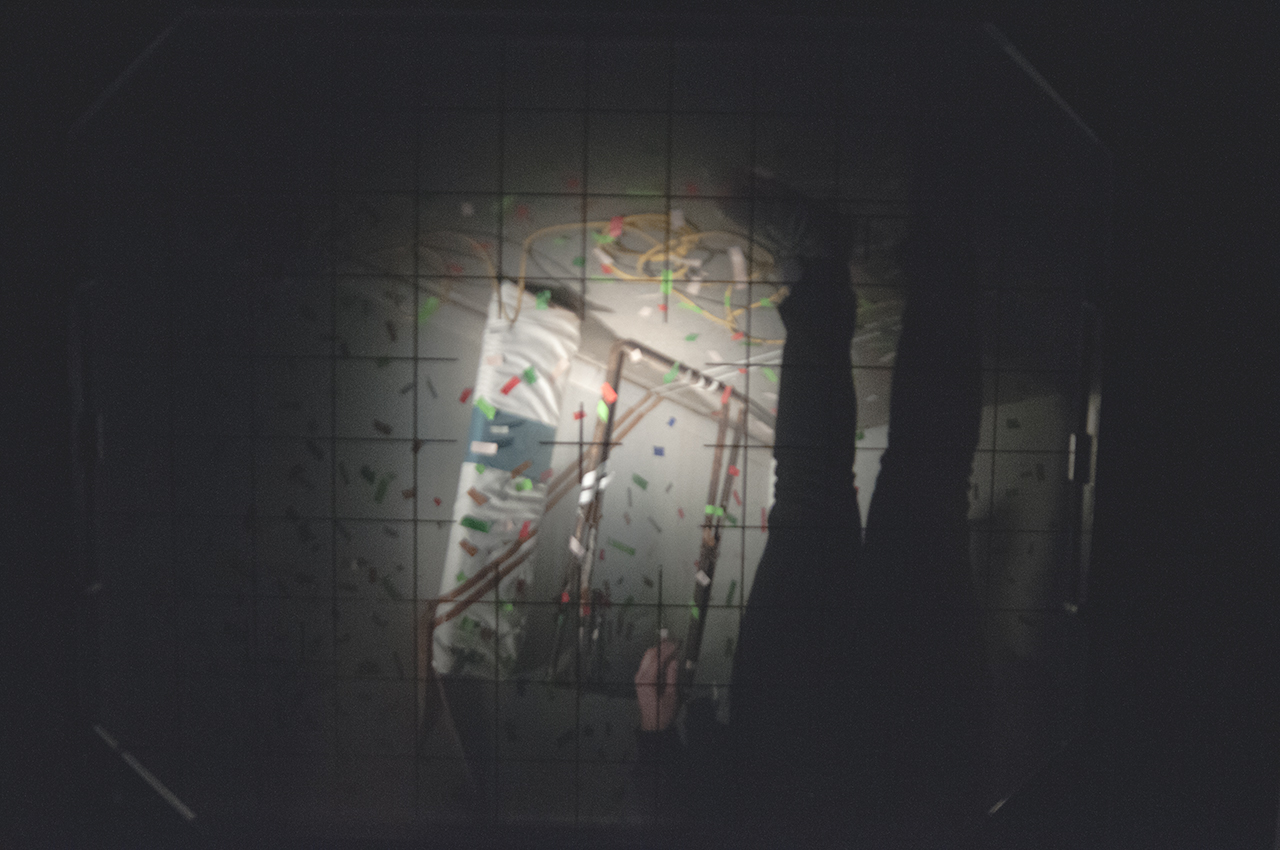Inside\Within is a constantly updating web archive devoted to physically exploring the creative spaces of Chicago's emerging and established artists.
Support for this project was provided by The Propeller Fund, a joint administrated grant from Threewalls and Gallery 400 at The University of Illinois at Chicago.

Search using the field below:
Or display posts from these tags:
3D printing 3D scanning 65 Grand 7/3 Split 8550 Ohio 96 ACRES A+D Gallery ACRE animation Art Institute of Chicago Arts Incubator Arts of Life audio blogging Brain Frame CAKE Carrie Secrist Gallery casting ceramics Chicago Artist Writers Chicago Artists Coalition Chicago Cultural Center Cleve Carney Art Gallery Clutch Gallery Cobalt Studio Coco River Fudge Street collage collection Columbia College Chicago Comfort Station comics conceptual art Contemporary Art Daily Corbett vs. Dempsey Creative Capital DCASE DePaul University design Devening Projects digital art Dock 6 Document drawing Duke University dye Elmhurst Art Museum EXPO Chicago Faber&Faber fashion fiber Field Museum film found objects GIF Graham Foundation graphic design Harold Washington College Hatch Hyde Park Art Center illustration Image File Press Imagists Important Projects ink installation International Museum of Surgical Science Iran Jane-Addams Hull House Museum jewelry Joan Flasch Artist's Book Collection Johalla Projects Julius Caesar Kavi Gupta Links Hall Lloyd Dobler LVL3 Mana Contemporary metalwork Millennium Park Minneapolis College of Art and Design Monique Meloche Museum of Contemporary Art Chicago (MCA) Museum of Contemporary Art Detroit (MOCAD) Museum of Contemporary Photography (MoCP) National Museum of Mexican Art (NMMA) National Resources Defense Council New Capital Northeastern Illinois University Northwestern University Ox-Bow painting paper mache Peanut Gallery peformance Peregrine Program performance photography PLHK poetry portraiture printmaking public art Public Collectors publications Renaissance Society risograph rituals Roman Susan Roots&Culture SAIC screen printing sculpture Sector 2337 Shane Campbell Silver Galleon Press Skowhegan Slow Smart Museum Soberscove Press social practice South of the Tracks Storefront SUB-MISSION Tan n' Loose Temporary Services Terrain Terrain Biennial text-based textile textiles The Banff Centre The Bindery Projects The Cultural Center The Franklin The Hills The Luminary The Packing Plant The Poetry Foundation The Poor Farm The School of the Art Institute of Chicago (SAIC) Threewalls Tracers Trinity College Trubble Club University of Chicago University of Illinois at Chicago (UIC) University of South Florida at Tampa Valerie Carberry Vermont Studio Center video weaving Western Exhibitions wood carving woodwork Yellow Book Yollocalli Arts Reach zinesInside\Within is produced in Chicago, IL.
Get in touch:
contactinsidewithin@gmail.com
Robert Chase Heishman’s Process-Driven _IMG
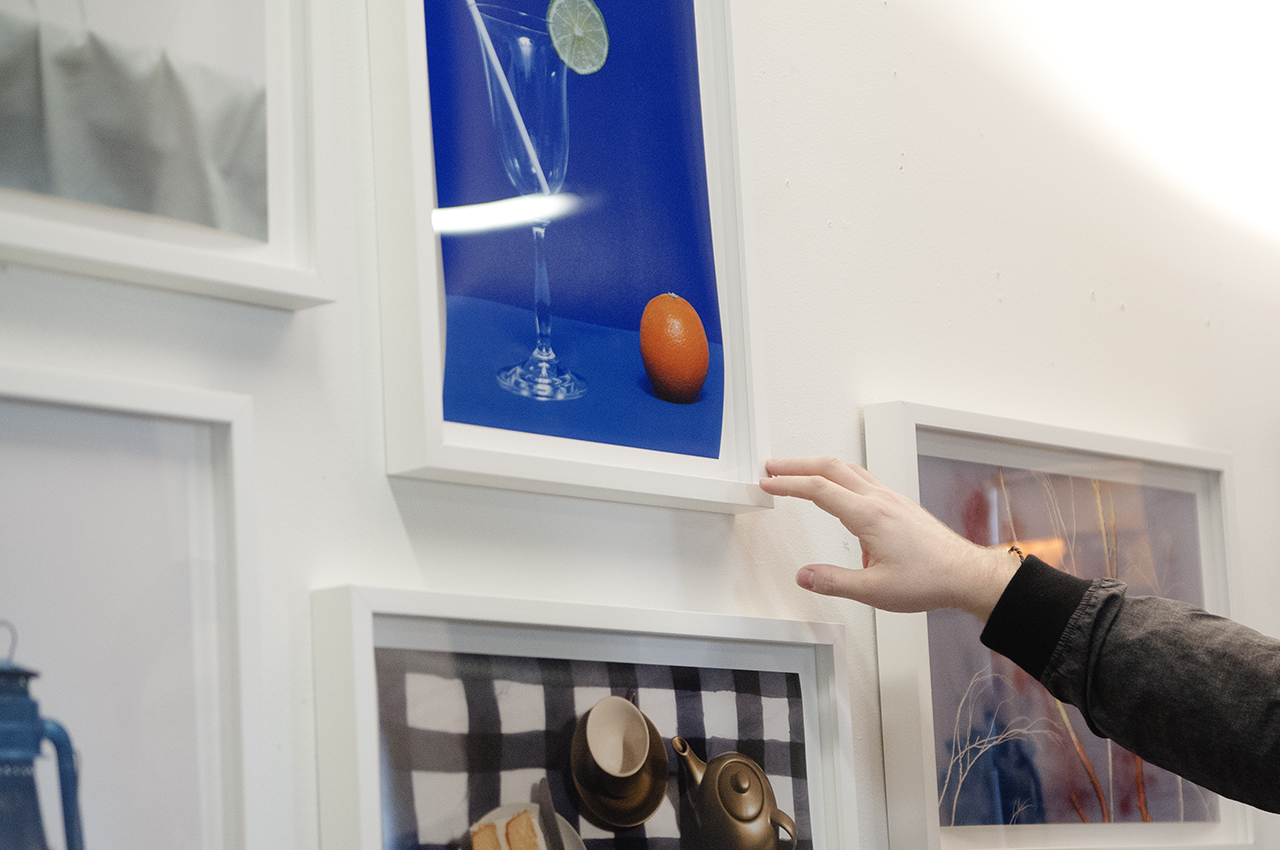
Taping off large sections of familiar territory, Robert brings monotonous methods to mundane environments through elaborate tape constructions in his ongoing series _IMG. The resulting works flatten the picture plane while leaving his hand an evident part of the image, the photographic pieces resisting rigidity to embrace a more freed-up personality. Starting his career in the direction of Merce Cunningham, Heishman has continuously focused on collaboration in his work, chance manifesting projects just as equally as intuition.
I\W: Your practice seems to be very project-oriented. Can you talk about your your attraction to working in this way?
RCH: I see working in a project-based manner as a strategy of exploring the multitude of one’s interests. There are many things to become obsessed with in this global, connected, and instantaneous world. When I read the news, a book, see a lecture, a movie, tv show, performance, et cetera I can’t help but become fixated on subjects I didn’t anticipate being compelled by. For these multiple interests to manifest in my studio as a singular form just isn’t how I work. I used to try at great lengths to stay in one mode of working. I guess it was how I thought an artist should conduct and maintain one’s practice. But I just couldn’t do it. No matter how much I tried to make one body of work, my intrigue into new ideas and subjects compelled me to add a tributary. Now I see simultaneously working on multiple projects as a strength, a mode of working that allows for adaptability and openness — tenets that are important to me and my artistic practice. Also, having spanned years of making things this way, commonalities — both visually and conceptually — become apparent. Self-reference, perception, revealing the construction of an image, and latency coalesce in form and visual idioms in my projects.
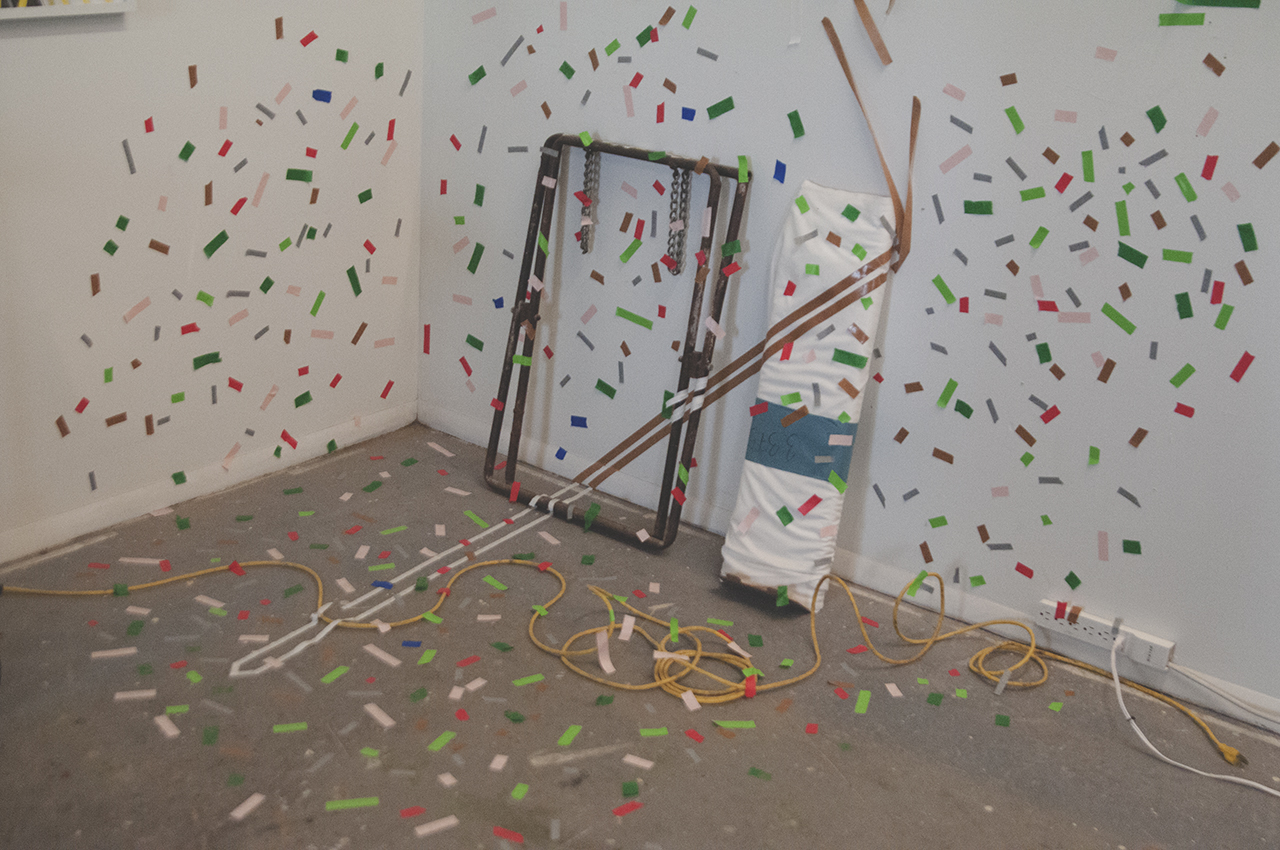
What is the newest project you’ve started to investigate?
I’ve recently tried taking out sections from a blueprint and recreating that as an installation to shoot, in the same manner as my _IMG series — with the colored pieces of tape flattening the picture plane and constructing the lines of the blueprint within the space. The absurdity of a blueprint manifesting not a three-dimensional structure, but rather another flat glyph in space makes me chuckle to myself. I’m not sure where this will lead, or if it will stay exclusively with blueprints, but right now I’m enjoying the different mark from what I initially began the series using. That said, I came into the studio after the start of the new year and didn’t feel like staying so rigidly with lines, so I exploded the lines of tape into a confetti-like series of marks in the space where I had been making the blueprint tape piece. We’ll see where things evolve. I’m also using a 4×5 view camera where I had been previously been making them digitally. I wanted to shoot on film again and just see if the quality is different, or if it changes things for me. So far it has slowed things down and made me pay better attention to each mark being made.
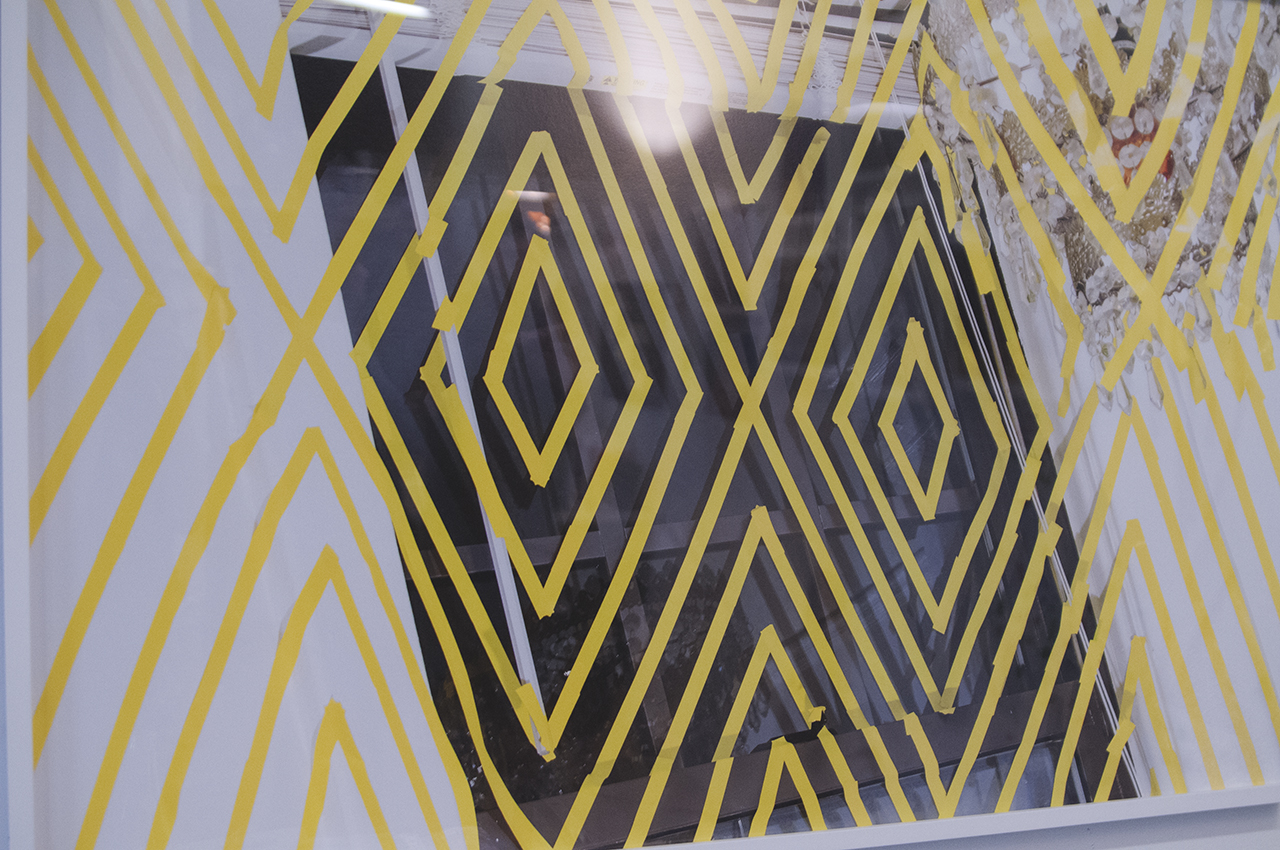
How do you decide the locations and environments for your _IMG series?
Generally it’s a place where I have often been to and have a relationship with. For instance, when I come into this studio there is a place at the top of the stairs that I would stare at routinely. I really wanted to make something from this seemingly mundane place. I sound like a mystic or something but this process of selecting a site to make a tape piece is probably the most intuitive I have been within my practice — it is not a systematic way of finding something. Obviously within the project to date there are references to Frank Stella. I was reading about his process of how he made his black paintings and was really drawn to how reductive it was. His process was simply about the width of his brush, the constraints of the size of his canvas (the frame), and his impetus to take out illusionistic space from his paintings. He would make a mark and just follow that around the perimeter of the stretched canvas. I was drawn to the labor of it all, and how it seems like a perfect way of tackling what to do within a frame. My father was a bricklayer and when I was younger I would be around him on job site and sometimes help out. I was thinking about both the methodical nature of laying brick and Stella’s reductive labor of painting when I was starting this series. The monotonous labor is what I am interested in. In a way, the labor of laying down a formal pattern in space feels oddly familiar and familial. I love how freeing it is to simply be making marks that add up like they do. I’m also interested in not making things completely rigid and perfect. This seems disingenuous for me to work like that. I have a ham-handed precision to what I make and want that to come through in my marks. It’s not about authenticity, but recognizing how you manifest your personhood into these art objects.
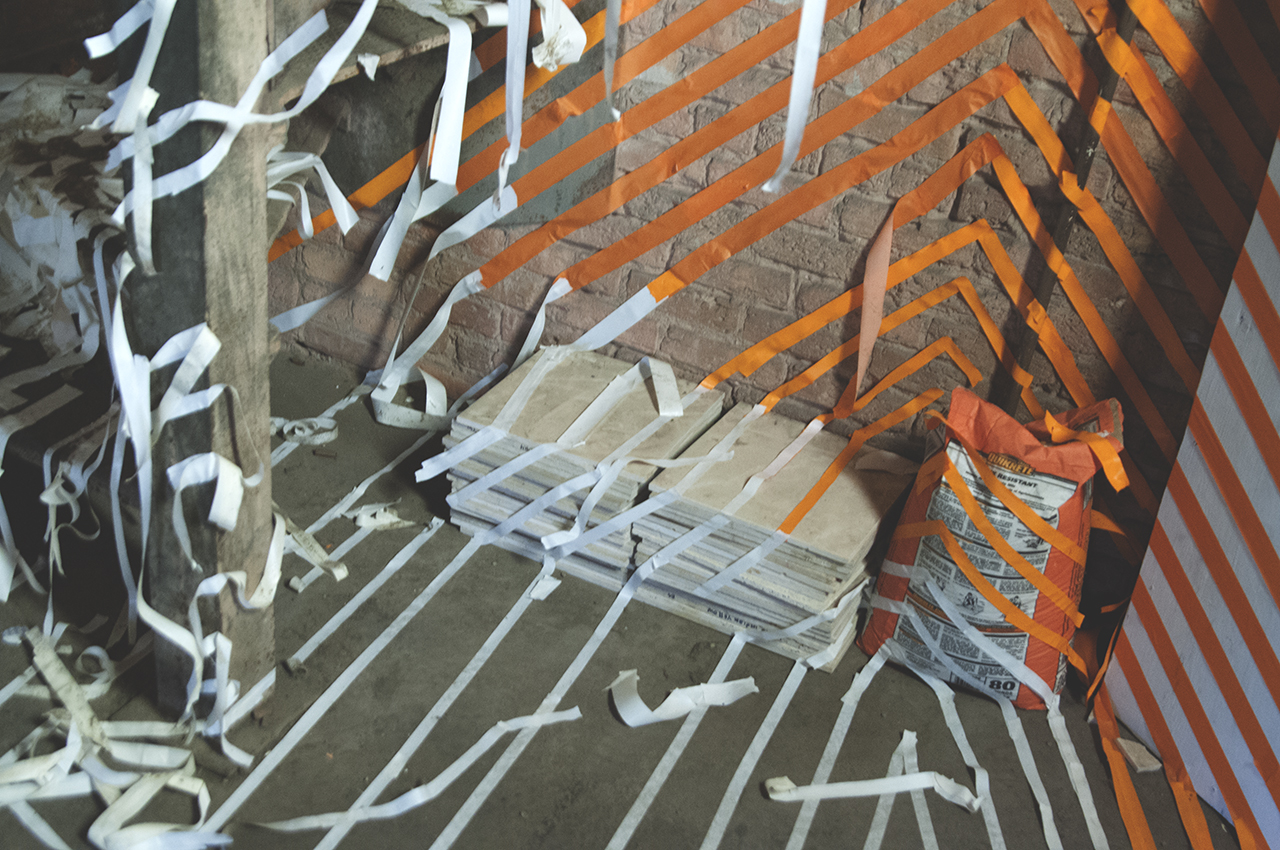
How did your project of recreating Guantanamo Bay detainees’ artwork coalesce and why did you decide to title the series Indefinite Free Time?
This project came about alongside the evolution of my _IMG series. I was looking at a lot of paintings online and had bookmarked an article from 2011 about Guantanamo Bay detainees getting access to art classes when President Obama was inaugurated. A reporter, Emma Reverter, was allowed to take cell-phone photos of the artwork the detainees had made. My photographs for Indefinite Free Time are based on her mobile phone pics of the detainee paintings and drawings. To begin the series, I simply tried to flatten the picture plane, much like the _IMG series, but into a painting’s tableau. I wanted to imbue the content of the image which something that is charged and relevant to today. Through my process of constructing the image, I started to realize that I was assembling and looking at the same thing that the detainees were looking at. In this sense, it is not a representation of an artwork, but rather a portal into seeing what a detainee was actually seeing. There is something nice about how innocuous and yet incredibly charged a photo can be. This sense of setting up a still life was also familiar it me. In a lot of my work there is a rigorous amount of set up just to take the one image. I often find the objects in thrift stores or on eBay, and some of them I really had to seek out to find the specific object I needed. I ordered some shells specifically from Cuba for one of the shots. As for the title, in the original article there was this guard that is quoted at the end saying that the detainees have a lot of free time on their hands. That’s how the article ended and it blew my mind to think about a guard at a detention prison saying that the prisoners have free time. It nods in the direction of what the content of the images are without being too explicit. The notion of indefinite free time is still quite maddening to me.
I have a ham-handed precision to what I make and want that to come through in my marks. It’s not about authenticity, but recognizing how you manifest your personhood into these art objects.
Do you reference the original author of the work in any way?
Yes, I do note their names in the title of the work if it is revealed that a particular work was made by a specific detainee. It’s important to me to specify the author, if I discover the name attributed to a work. For instance, one of the youngest detainees, Omar Khadr, is the author of a delightful painting of a drinking glass with a lime, a small orange beside it, amidst a rich, blue background. Omar has since been released and repatriated to Canada. He was 15 when he was detained, and used his paintings in his legal defence as a form of his rehabilitation while in captivity. I’m currently trying to get in contact with him now to try to have a conversation with him. Aside from Omar, the only other author I have found to another work is Djamel Ameziane, an Algerian citizen who was transferred back to Algeria from Guantanamo Bay back in 2013. Lately, I have been obsessed with what’s called the “cactus curtain” — a literal borderline of cactus separating the US Guantanamo Bay naval base from the Cuban-controlled territory. I’m interested in incorporating cacti into the next phase of photographs I make in the Indefinite Free Time series of work. I just can’t stop thinking about making a cactus curtain in the studio.

In your ibid. series and collaboration with Megan Schvaneveldt you not only go through the process of an incredibly detailed set-up, but you also show the tear down of each scene on camera. What is your reasoning for this?
This is something that naturally evolved with Megan and I. I think part of it was that there was a nice loop point to it, and then it was also quite practical. We needed to clean up our mess, so why not let that creatively build up and devolve within the videos themselves? For me, the videos we make are about indulging in cheap humor and magic tricks. How we came together to make this work is largely because they were a way for us to have fun while making slow-paced science fair-esque videos. The videos we make merge both of our interests in making absurd, moving, paintings in space. In this scenario, replace paint with dollar store objects and you’ve got the materials we use. It’s as if we are animating and combining objects in an effort to land a nice visual for a few seconds, or build a strange joke. The way we make objects perform outside of their intended or typical function is where, I think, humor arises in the videos. We try to not be incredibly visible in our videos either, so in some sense the videos are like an abstract puppet show. It’s hard to say definitively what is going on in the videos because I think they are quite open-ended — which is what we want. That said, we labor over our ideas and choreography. There is also a lot of chance that fuels the ibid. project. The string of material play and ideas will be rehearsed countless times before we record them all in one take. The end result is a continuous video that has a crescendo and decrescendo and has the spirit of the construction of a painting. I think the reveal of process is what is the through-line between Megan and I’s practices. We each are so process oriented in our own work that when we come together to make our videos its all about revealing process in real time.

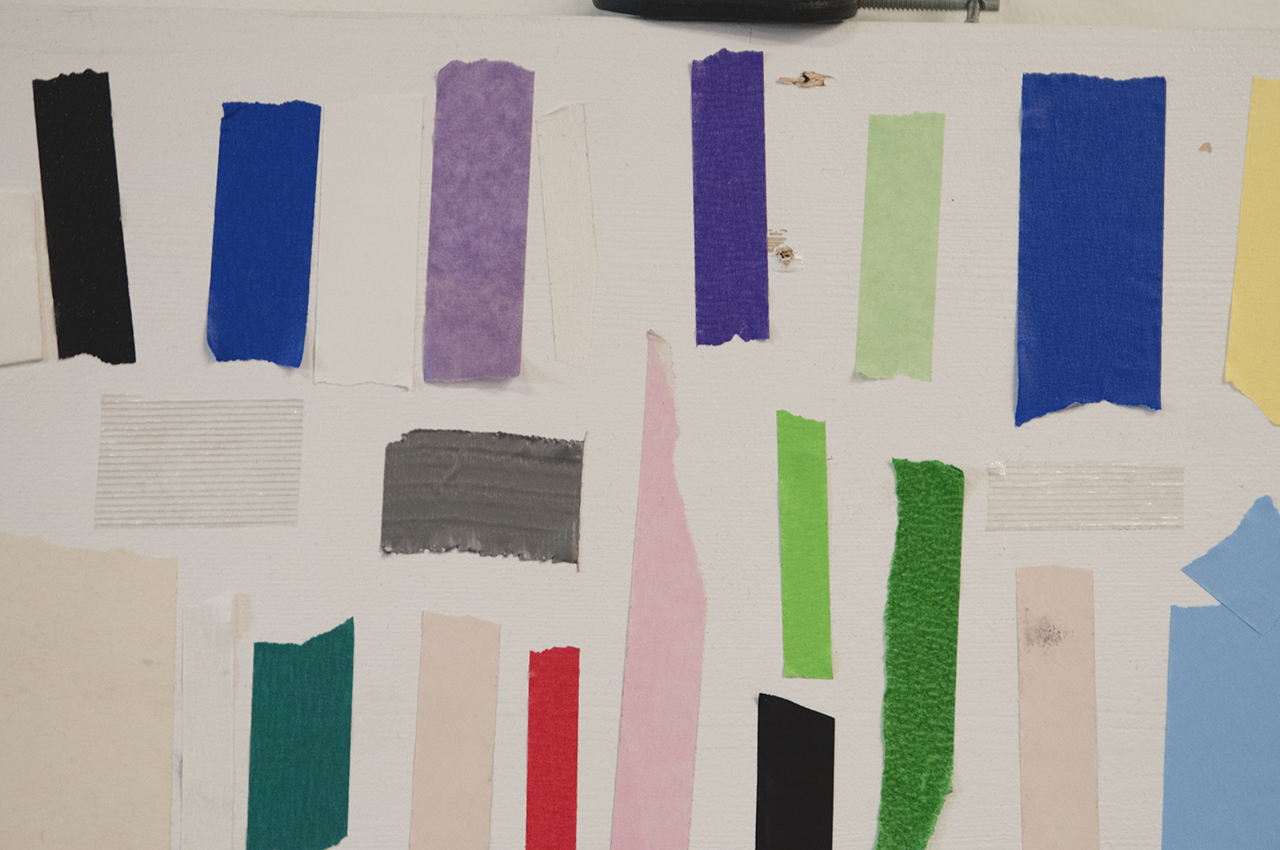
How did you come to work with Merce Cunningham and how did that influence the trajectory of your art practice?
It was this chance encounter, much like many opportunities in my life have come to be. I was in high school at the time and my high school art teacher invited the Merce Cunningham Dance Company to come and do a workshop with my art class. They invited our class to go backstage and see stage design by Warhol and Rauschenberg and I showed up after school to see the decor and no one else showed up. The executive director of the MC/DC ended up giving me a personal tour — I can remember touching a silver mylar “cloud” by Warhol and costumes by Rauschenberg, but not knowing the art historical gravity of it all. It was new and exciting and I was engaging with it quite purely. I ended up keeping in touch with the director and he asked me to send him some of the photographic work I had been making with pinhole cameras. After a few weeks, he called me up and explained that Merce Cunningham had selected my work from a pile of artists to design a set for an upcoming dance. He also mentioned that Radiohead and Sigur Ros were creating a score for the dance. I had to explain to my parents that I would be going back and forth to New York while finishing up my senior year. I started going there and doing production meetings and it was this strange experience because I knew nothing of it, but they respected my input and treated me as if I had been in the art world for forever. This incredible generosity and kindness and trust is frankly hard to come by in the art world. I ended up learning a lot from Merce, the dancers, fellow collaborators, and Trevor Carlson, the executive director with whom I stayed with on my trips to NYC, and who I regard as a deeply influential mentor of mine. This whole experience marked the start of my artistic career. I long to collaborate with a choreographer/dance company/artist by designing sets again. I see themes of openness, chance, and collaboration have remained at the forefront of how I approach projects of mine and I directly trace this to my time with the Merce Cunningham Dance Company. The influence this time had on the trajectory of my career is that it affirmed my belief in the generative properties of art.
